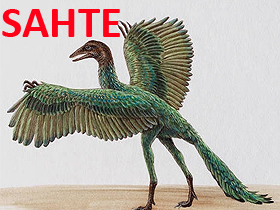 Some media organizations accept the theory of evolution unquestioningly and present every new fossil as if it were scientific evidence for the theory. In 1999 for example, newspapers interpreted the fossil known as Archaeoraptor as a winged dinosaur. Some two years later, however, it emerged that the fossil in question was an evolutionary fraud. Those same newspapers had to accept that all the talk of a “dino-bird” was mere nonsense. |
This fossil is said to have been discovered in China in 2001, but was actually a false construction. The hoax was detected through detailed analysis by researchers, who published the results in Nature magazine:
The Archaeoraptor fossil was announced as a missing link and purported to be possibly the best evidence since Archaeopteryx that birds did, in fact, evolve from certain types of carnivorous dinosaur . . . But Archaeoraptor was revealed to be a forgery in which bones of a primitive bird and a non-flying dromaeosaurid dinosaur had been combined. . . . We conclude that Archaeoraptor represents two or more species and that it was assembled from at least two, and possibly five, separate specimens. . . Sadly, parts of at least two significant new specimens were combined in favor of the higher commercial value of the forgery, and both were nearly lost to science. Paleontology was also badly damaged by the Piltdown forgery and the “lying stones” of Johann Beringer, and many fossils have been unwittingly or deliberately subjected to misleading reconstruction.46 (See Piltdown Man.)
46 Timothy Rowe, Richard A. Ketcham, Cambria Denison, Matthew Colbert, Xing Xu, and Philip J. Currie, “Forensic palaeontology: The Archaeoraptor forgery,” Nature, 29 March 2001, Vo.: 410, pp. 539-540.


